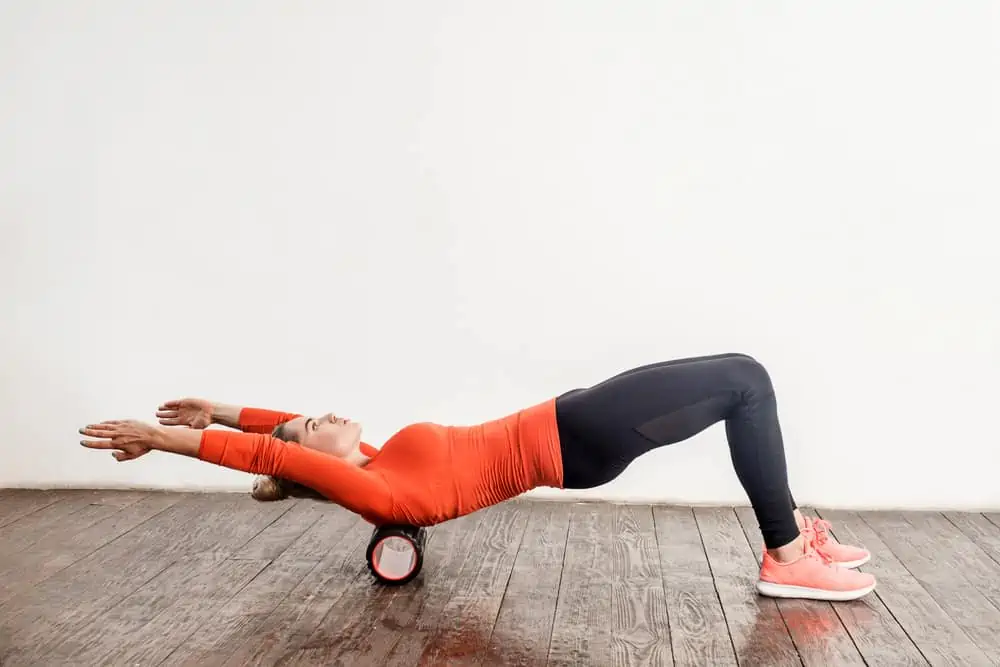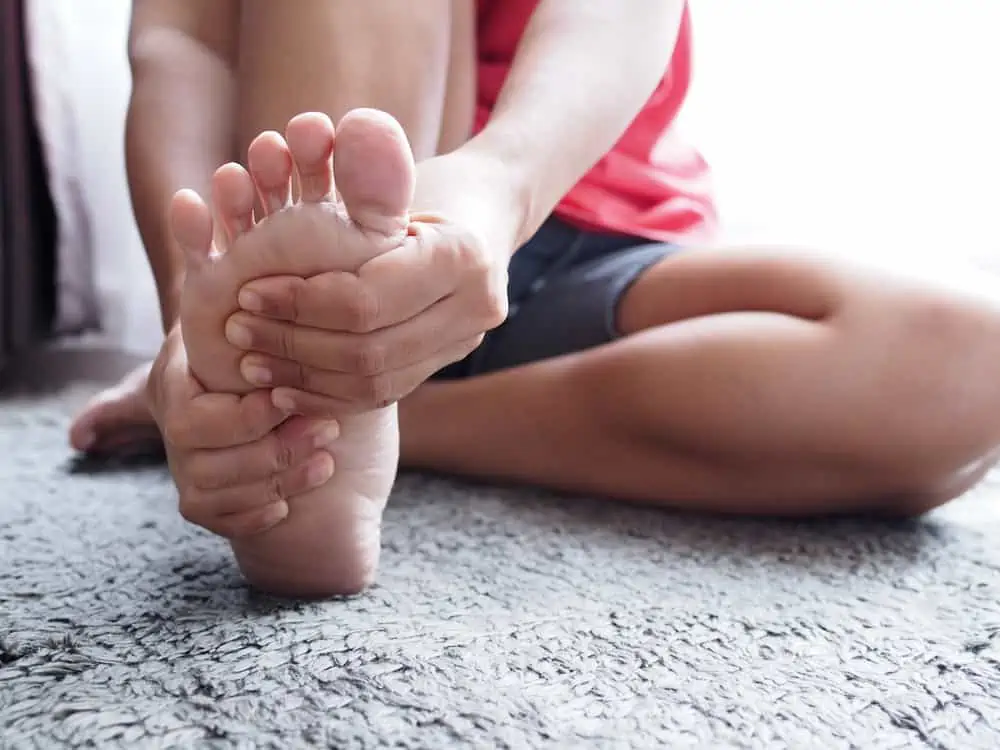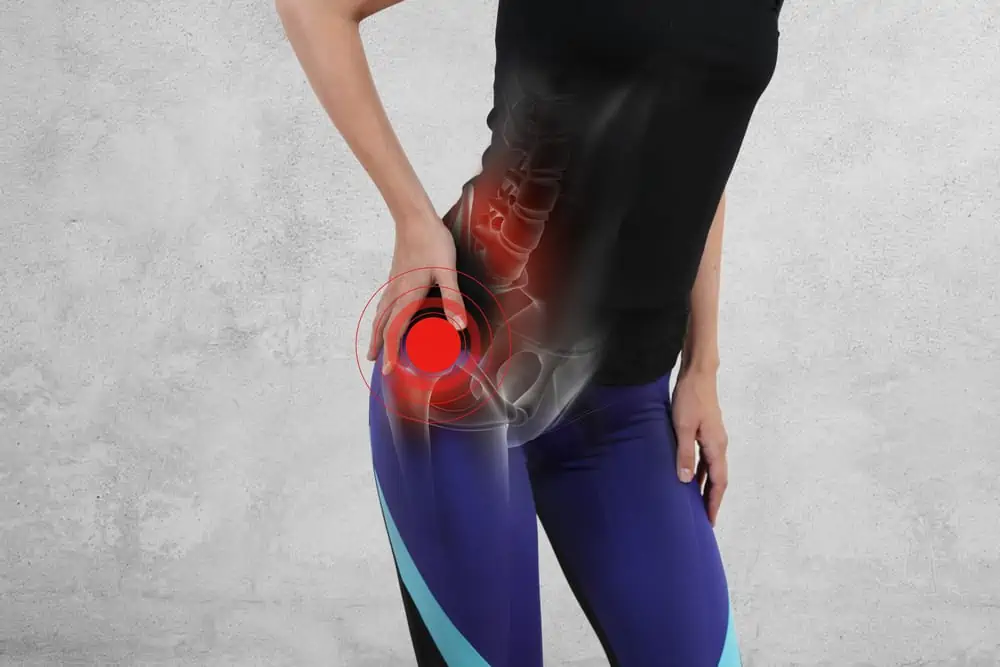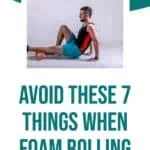This post may contain affiliate links. If you click through a link and make a purchase, I may receive a commission at no additional cost to you. As an Amazon Associate, I earn from qualifying purchases. Read the full disclosure here.
Foam rolling is all the rage and can be an accessible way to improve your mobility and manage aches and pains on your own.
At every gym, it seems like foam rolling is touted as the key to cure what ails ya.
But can foam rolling be harmful? Yes, foam rolling can be harmful if you’re ignoring these basic guidelines.
Keep reading to learn what not to do when foam rolling to avoid making things worse.
Disclaimer: This content is for educational purposes and is not medical advice. Read the full disclaimer.
Is foam rolling safe?
Generally, foam rolling is considered to be safe for most people (when the proper technique is used).
Cheatham et al. concluded that foam rolling may be effective for enhancing joint ROM for both pre and post-exercise.
There is some evidence that foam rolling after high-intensity exercise may help decrease perceived pain from DOMS (delayed onset muscle soreness – that next-day muscle tension that lets you know you did something.)
Decreasing muscle soreness and maintaining flexibility can help with overall muscle performance and tissue recovery.
- Foam rollers are often used as part of a warm-up and for muscle recovery.
- No adverse effects on performance have been found when foam rolling as part of a warm-up.
- The benefits of foam rolling may be more significant when combined with a consistent static stretching program post-activity.
To read more about the science behind how foam rolling works, read this article.
7 things to avoid when foam rolling
Coming back to the question of can foam rolling be harmful?
Here are 7 things to avoid to make sure your rolling session stays safe and effective.
1. Don’t roll too quickly
Your body needs a bit of time to feel the pressure and produce any physiological changes.
A quick 1-2 over an area is a waste of time. It’s best to linger, but not too long.
Ideally, spend approximately 60-90 seconds per muscle group, targeting a tender spot for about 30 seconds.
More than this is not necessary and could increase soreness or cause bruising, rather than decrease.
2. Don’t press too hard
More isn’t always better. Too much pressure can cause bruising and increase pain or tissue damage.
Finding that “just right” pressure helps elicit a relaxation response from the nervous system to get the most benefit out of foam rolling.
Sometimes, just the weight of your body on the roller can be too much. Use support from your arms and legs to adjust how much pressure you’re using.
Also, you can consider using a softer density roller for less pressure.
3. Don’t hold your breath
The main reason why you’re foam rolling is probably to relieve tension and tight muscles.
This process is much bigger than what’s going on locally at the muscle level, in fact, it includes the entire nervous system. The nervous system ultimately controls how we perceive muscle tightness.
Controlled deep breathing is a quick and natural hack into the nervous system. Deep breathing taps into the parasympathetic nervous system (rest and digest) and promotes relaxation.
Don’t hold your breath if you really want that tight muscle to loosen up.
4. Understand the difference between discomfort vs. pain
Differentiating between sensations is a key piece of what “listen to your body” means.
Foam rolling is not comfortable. It’s often described as that “good hurt,” similar to a deep tissue massage. The goal of foam rolling is pain relief, not more pain. If an area is exceptionally painful, it’s best to back off.
If you find foam rolling very uncomfortable, try a lighter density foam roller or a vibration foam roller. You can also try various positions and support yourself with your upper body to decrease the amount of body weight through an area.
Read this article for all the details on how to choose the right foam roller.
5. Don’t roll over joints
Stick to areas over muscle tissue and avoid pressure over joints, tendons, ligaments, or other soft tissue structures.
This also includes the low back. It’s perfectly fine to roll the muscles surrounding the lower back, but avoid direct pressure on the vertebrae.
To get deeper into the paraspinals (the muscles that run along the sides of the spine) I like a roller like the Rollga roller because it has cutouts that can relieve pressure on certain areas. Rollga rollers also come in light, medium, and firm densities.
You can also consider the Sidekick Fuse. This is a vibration massage tool with a peanut shape to better contour different body parts.
Related read: Vibration Foam Rollers vs. Massage Guns – Which Is Better?
6. Understand why you’re rolling
Foam rolling can’t fix everything. Make sure you have a rhyme and reason to foam roll and don’t just copy other people.
One of the most common mistakes in healthy populations is aggressively rolling over the IT Band and bony prominence on the outside of the hip, known as the greater trochanter.
It’s a common misconception that using a foam roller over the IT band will help “stretch” or “loosen” it. In reality, the IT Band is a thick stabilizing structure and doesn’t stretch.
The best way to tackle IT Band pain is to get an evaluation to determine why you’re having pain and correct that muscle imbalance.
Read this article to learn more about what causes IT Band issues.
7. Precautions & contraindications to foam rolling
Here are some examples of when foam rolling might not be safe. Be sure to check with your physical therapist or certified personal trainer for more details specific to you.
- Pregnancy
- Recent injury/surgery
- Open wounds
- Over tumors/malignancies
- Blood clots
- Fractures
- Direct pressure over body prominences (such as the lumbar spine and lateral hip)
- Direct pressure over arteries, veins, nerves, abdomen
- Osteoporosis
- Other systemic medical conditions
- Neuropathies
Wrapping up
Foam rolling can be a beneficial piece of an overall workout plan or to intermittently address a sore spot or tissue tension.
Combining your foam rolling session with stretching or mobility exercises can help you maximize results.
Make your foam rolling session a success by avoiding these common mistakes that can be harmful.
Follow the blog for more injury prevention tips.
References
Cheatham, SW and Stull KR(2018). Roller Massage: A Commentary on Clinical Standards and Survey of Physical Therapy Professionals – Part 1.International Journal of Sports Physical Therapy, 13(4): 763–772.
Pearcey GE, Bradbury-Squires DJ, Kawamoto JE, Drinkwater EJ, Behm DG, Button DC. Foam rolling for delayed-onset muscle soreness and recovery of dynamic performance measures. J Athl Train. 2015;50(1):5-13. doi:10.4085/1062-6050-50.1.01
Romero-Moraleda B, Gonzalez-Garcia J, Ceullar-Rayo A, Balsalobre-Fernandez C, Munoz-Garcia D, and Morencos E(2019). Effects of Vibration and Non-Vibration Foam Rolling on Recovery after Exercise with Induced Muscle Damage. Journal of Sports Science & Medicine. 18(1): 172–180.
Wiewelhove T, Doweling A, Schneider C, Hottenrott L, Meyer T, Kellmann M, Pfeiffer M, and Ferrauti A (2019). A Meta-Analysis of the Effects of Foam Rolling on Performance and Recovery. Fontiers in Physiology.10: 376. doi: 10.3389/fphys.2019.00376







